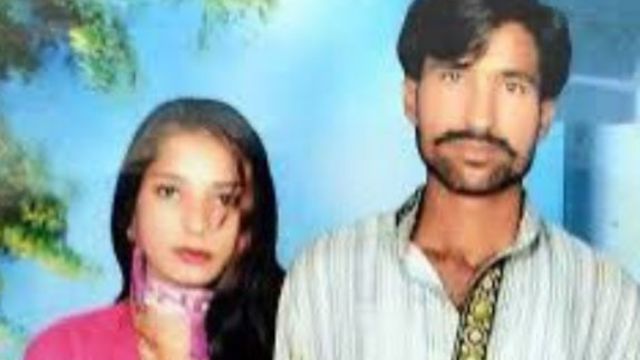
Nearly a decade has passed since the horrifying deaths of Shama and Shahzad Masih, and
still, their story resonates as an open wound in Pakistan’s conscience. The Christian couple,
laborers bound to a brick kiln, were brutally killed by a mob of hundreds, incited by
loudspeaker proclamations from local mosques. Their alleged crime: desecration of the
Quran—a charge that surfaced without evidence, context, or fair investigation. In November
2014, they were tortured and thrown alive into the kiln’s furnace, leaving behind their three
young children and the searing question of whether justice would ever be served.
Yet, despite initial convictions, the case has now taken a familiar and disheartening turn.
This past week, Pakistan’s Lahore High Court overturned the death sentences of two of the
men originally found guilty. While the sentences for three others were upheld, the acquittals
cast doubt on the strength of justice in a system all too susceptible to external pressures,
procedural failures, and selective application of the law. With each acquittal, the initial hopes
for accountability diminish, and the memory of Shama and Shahzad's fate edges closer to
becoming just another chapter in a grim history of injustice.
To revisit the details of the incident is to confront a devastating combination of religious
fervor and social injustice. Shama and Shahzad were bonded laborers—a status that
remains shockingly common in Pakistan, where an estimated 4.5 million people, many of
them children, are trapped in debt servitude in kilns, farms, and factories. Their economic
vulnerability only sharpened the brutality that awaited them. Working for an employer who
essentially owned their lives, they had little chance of escaping the confines of the brick kiln,
where their bodies and labor were as expendable as the raw clay. The police report following
the incident mentioned that the kiln owner and his assistants opened the furnace to facilitate
the mob’s plan, a chilling detail that illustrates the complicity of those in power when the
disenfranchised are accused of crimes in which guilt is assumed, and innocence, irrelevant.
What compounds the tragedy is the impunity with which mob violence operates in Pakistan,
especially when accusations of blasphemy are involved. Allegations of blasphemy, as in the
Masihs’ case, have led to public executions, murders, and unpunished harassment in a
society where even a whisper of sacrilege can endanger lives. In this atmosphere, the mere
accusation functions as a sentence; evidence is superfluous, and mob consensus becomes
law. The loudspeaker-fueled calls to gather against Shama and Shahzad are chillingly
reminiscent of past instances where accusations served as pretexts for collective violence,
with authorities either powerless or unwilling to intervene. Even when police arrived on the
scene, witnesses recalled that officers were outnumbered, overpowered, and even attacked
by villagers—a striking indictment of the state’s inability to protect its citizens.
The legal proceedings that followed initially provided a glimmer of hope. In 2016, an anti-
terrorism court found five men guilty and sentenced them to death, while others received
lesser sentences. The verdict was widely seen as a rare, if tentative, acknowledgment of the
gravity of the crime. But the recent acquittals now undercut whatever solace those
convictions once offered, raising doubts about whether Pakistan’s judiciary can truly shield
the vulnerable when religious sensitivities are invoked. The acquittals were based on the
argument that some defendants were named as suspects only later in the investigation, a
technicality that, while legally defensible, fails to reckon with the moral enormity of the
Masihs’ killing. Such reasoning underscores how fragile accountability remains when cases
rest on prosecutorial details rather than a broader understanding of culpability.
The law’s limitations in the Masihs' case point to a larger crisis in Pakistan’s handling of
religious violence. The legal process surrounding blasphemy cases is marked by
inconsistency, political sensitivity, and procedural flaws, particularly in cases involving
minorities. This gap between law and justice reflects the troubling reality that when religious
fervor intersects with systemic prejudice, victims like Shama and Shahzad become
footnotes, their suffering reduced to ashes, their dignity forgotten amid procedural minutiae.
Meanwhile, the children of Shama and Shahzad—survivors of an unimaginable horror—are
left to grapple with the trauma of that day. Their parents’ legacy is now entwined with the
public struggle for justice, and for them, the acquittals deliver yet another layer of grief, a
reminder that the law may fail to protect even in death. And so, the very children who
witnessed the systematic stripping away of their parents’ humanity are left with the silence of
unanswered questions and a haunting narrative of communal betrayal.
As Pakistan awaits the detailed judgment, one wonders how many more acquittals,
reversals, or overlooked cases will become the norm when victims belong to minority
communities or are poor laborers with limited recourse. The Masihs’ case, like many before
it, demands a reckoning beyond legal formalities. It requires Pakistan to confront the
collective apathy and systemic failures that allow mobs to mete out their brand of “justice,”
unchecked and unpunished.
If the country cannot find a way to ensure that the vulnerable are protected and that mob
violence is met with clear, unequivocal condemnation and punishment, then the sacrifices of
Shama and Shahzad will remain as empty, unresolved promises. And Pakistan will continue
to carry the scar of their suffering—a reminder of justice abandoned in the name of
expediency and appeasement, a wound left open as the world looks on.




